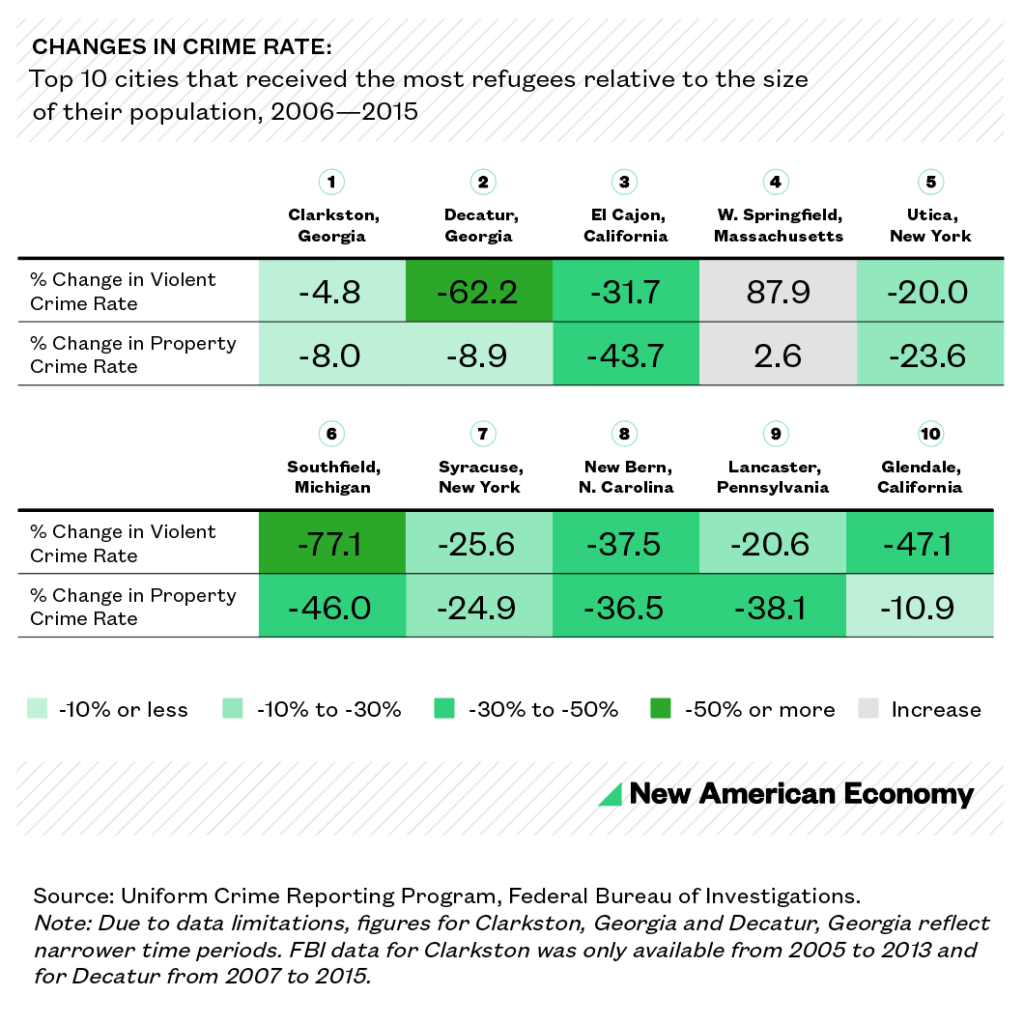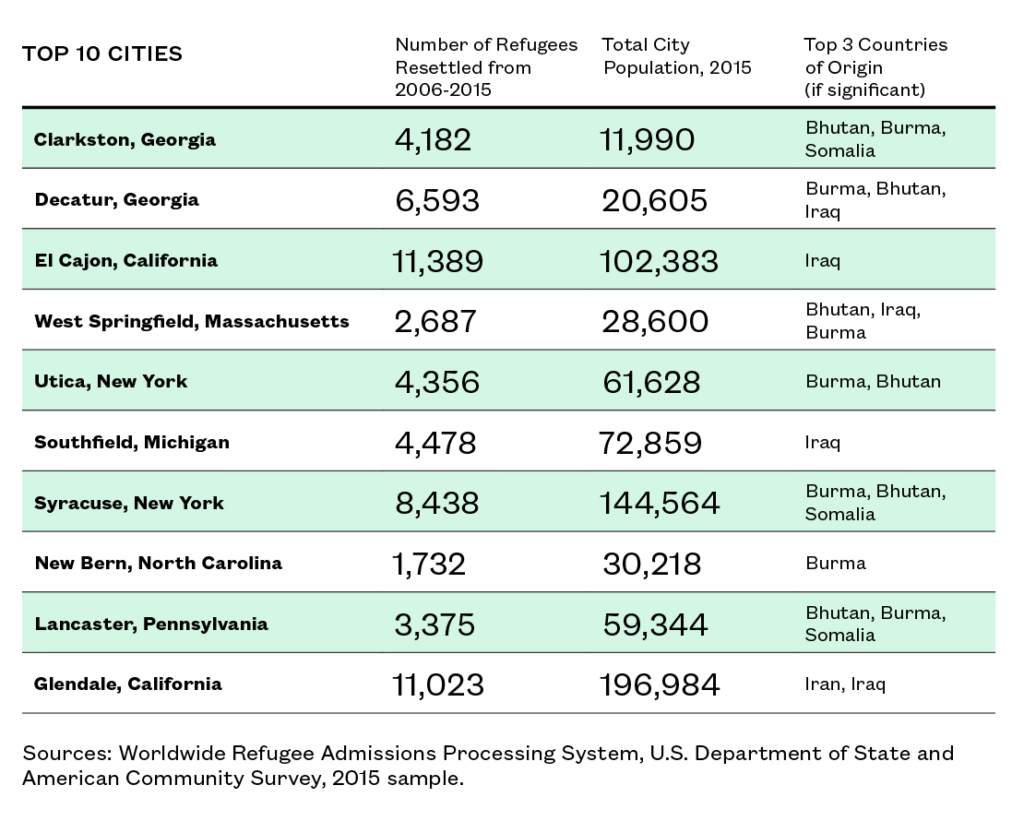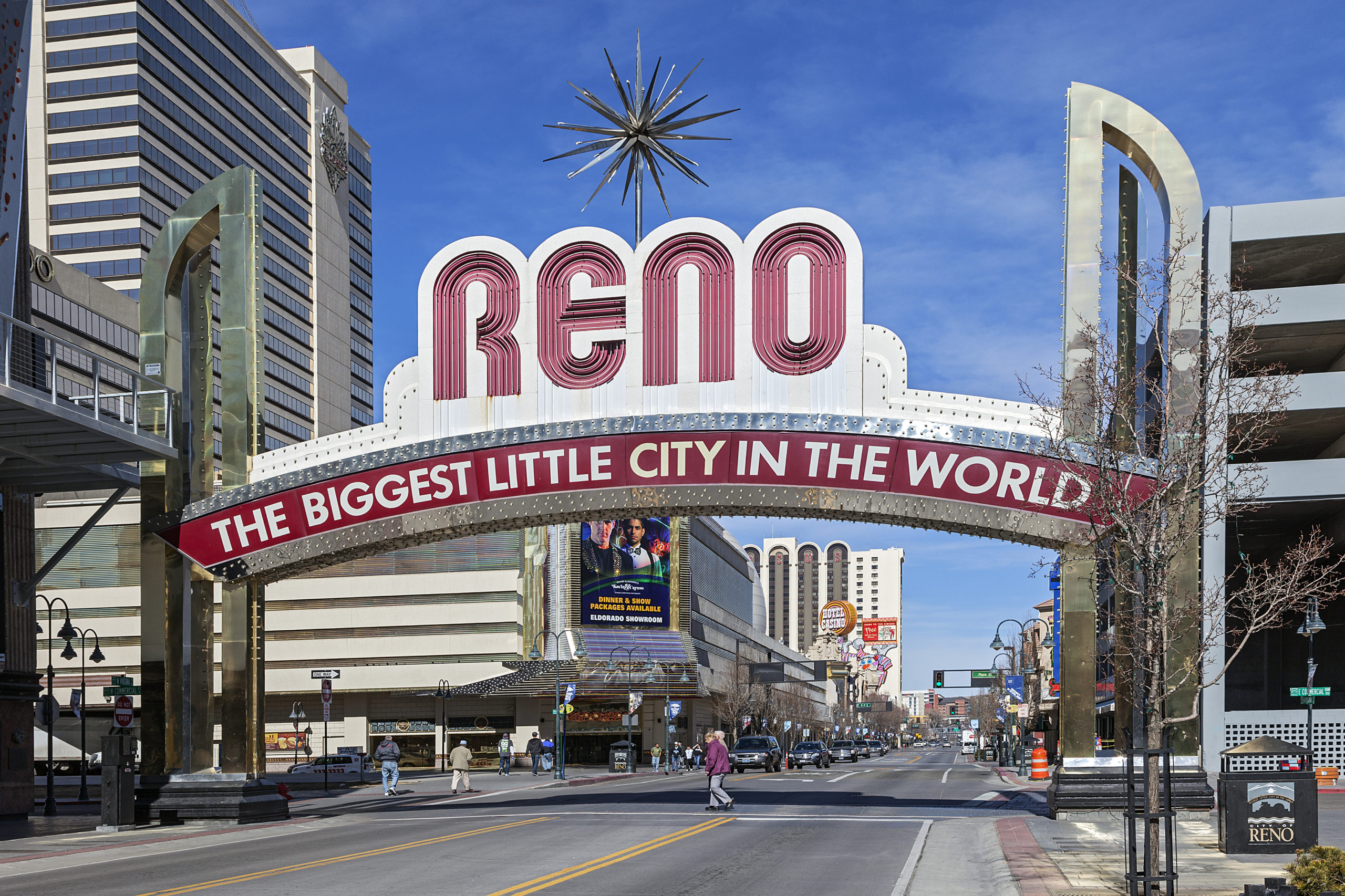Is There a Link Between Refugees and U.S. Crime Rates?
Examining Crime Data for the U.S. Cities Most Impacted by Resettlement from 2006-2015
Date: February 7, 2017
When a large number of refugees arrive in a given city, does crime rise in subsequent years? It’s a question obviously relevant to many current debates, both in the United States and in Europe. And one many policymakers are focused on now.
To examine this issue, we used refugee resettlement data from the U.S. Department of State’s Worldwide Refugee Processing System to calculate the 10 cities in the US that received the most refugees relative to the size of their population between 2006 and 2015. We then looked at what happened to both their overall crime rates over the same time period using detailed data available from the Federal Bureau of Investigation. This revealed a telling pattern: Rather than crime increasing, nine out of 10 of the communities actually became considerably safer, both in terms of their levels of violent and property crime. This included places like Southfield, Michigan, a community just outside of Detroit, where violent crime dropped by 77.1 percent. Decatur, Georgia, a community outside Atlanta, experienced a 62.2 percent decline in violent crime.

As the table indicates, there is one city, West Springfield, Massachusetts, that saw an increase in crime between 2006 and 2015. That city and the surrounding area, however, was also impacted by another trend that swept across many parts of America during that time period—a ravaging opioid epidemic. Numerous news articles tie drug-related gangs to a rise in violence in the area.[1] This phenomenon was already well underway before the most recent wave of refugees began arriving. The FBI was leading large-scale raids in Springfield as early as 2005.[2]
In the below table, we also provide more background data on the cities we studied, as well as some basic characteristics of the refugees that resettled there. As the figure demonstrates, all of the cities, including the smallest ones, accepted roughly 2,000 or more refugees during the time period studied. These refugees were from a range of countries, including Burma, Somalia, and Iraq.

Methodology:
The Federal Bureau of Investigation(FBI) collects the number of offenses known to law enforcement agencies each year. We used Table 8 of Uniform Crime Reporting (UCR) Program from FBI to calculate violent crime rates and property crime rates for each city between 2006 and 2015. According to the FBI, violent crimes are defined as offenses that involve force and threat of force, which include murder and non-negligent manslaughter, rape, robbery, and aggravated assault. Property crime, on the other hand, is composed of the offenses of burglary, larceny-theft, motor vehicle theft, and does not involve force or threat of force against victims. The FBI reports the number of offenses per 100,000 people. We followed this definition to calculate the violent and property crime rate in each city. Crime data from Lancaster City Police Department and Lancaster Township Police Department were combined for the analysis given their geographical proximity and historical tie. Due to limited data availability in some city agencies, offense data in alternative years are used, as noted in the above table.
The number of refugees resettled in each city is obtained from The Worldwide Refugee Processing System, a service maintained by the Refugee Processing Center operated by the U.S. Department of State’s Bureau of Population, Refugees, and Migration. City population figures were obtained from the American FactFinder using data from the 2015 American Community Survey.
[1] Erica Goode, “Springfield, Mass., Fights Crime Using Green Beret Tactics,” The New York Times, April 30, 2012, http://www.nytimes.com/2012/05/01/us/springfield-mass-fights-crime-using-green-beret-tactics.html; David McKay, “Springfield Gangs Are More Violent and Better Armed” (WWLP, November 11, 2015), https://www.google.com/maps/d/viewer?mid=1BpdslNyJuGdV6Qq1ecJxJ2ObYHw; “Springfield Police Cracking Down on Gang Activity,” WesternMassNews.com, October 7, 2013, http://www.westernmassnews.com/story/23569987/springfield-police-cracking-down-on-gang-activity.
[2] “Gang Success Stories,” FBI.gov, accessed February 6, 2017, https://www2.fbi.gov/hq/cid/ngic/success.htm.






